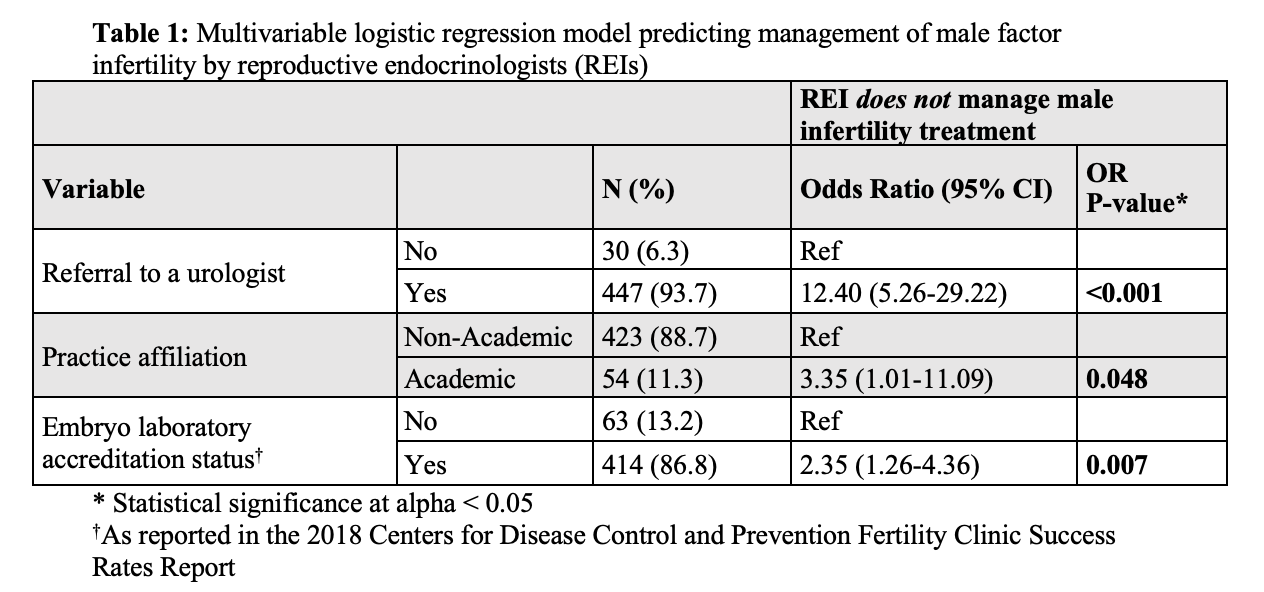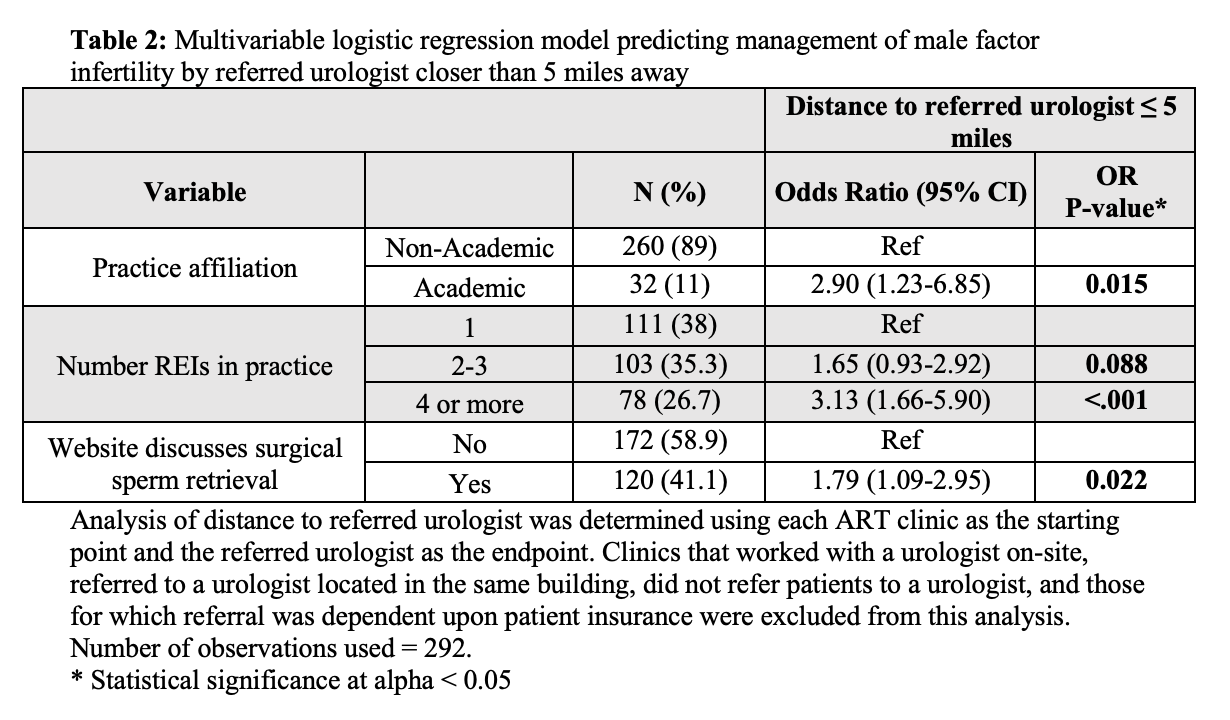Back
Poster, Podium & Video Sessions
Podium
PD09: Infertility: Epidemiology & Evaluation I
PD09-09: Predictors of Male Factor Infertility Management by Reproductive Endocrinologist versus Referral to a Nearby Urologist
Friday, May 13, 2022
2:20 PM – 2:30 PM
Location: Room 252
Julie Shabto*, Dattatraya Patil, Katherine Poulose, Mackenzie Bennett, Angel Xiao, Heather Hipp, Jennifer Kawwass, Akanksha Mehta, Atlanta, GA
- JS
Podium Presenter(s)
Introduction: The AUA/ASRM male infertility guideline recommends urologic evaluation for all subfertile men. Our study evaluates fertility clinic management of male factor infertility, including referral for urologic care.
Methods: Using 2015-2018 CDC Fertility Clinic Success Rates Reports, we identified 480 operative U.S. fertility clinics. We systematically reviewed clinic websites for content regarding male infertility and performed structured phone interviews of clinic staff to determine clinic-specific practices in managing male infertility. Multivariable logistic regression was used to investigate factors that predicted primary management of male factor infertility by the REI, as compared to referral to an outside urologist for medical and/or surgical management of male infertility. Factors considered included: geographic region, practice size, practice setting, in-state andrology fellowship, state-mandated fertility coverage, annual in vitro fertilization (IVF) cycles, and percentage of IVF cycles for male factor infertility.
Results: The analysis included data collected from 477 fertility clinics. Ninety-two clinics had REIs manage male partner’s treatment with medication (n=89) or surgical sperm retrieval (n=30). Clinics that were academically affiliated, had embryo laboratory accreditation and those that referred patients to a urologist were less likely to have REIs manage male infertility (Table 1). Larger practice size, academic affiliation and website discussion of surgical sperm retrieval predicted referral to a urologist within 5 miles (Table 2).
Conclusions: Private practice setting, lack of embryo laboratory accreditation and lack of urologic referral predicted REI management of male infertility. Academic affiliation, larger practice, and website educational content predicted referral to a nearby urologist.
Source of Funding: None


Methods: Using 2015-2018 CDC Fertility Clinic Success Rates Reports, we identified 480 operative U.S. fertility clinics. We systematically reviewed clinic websites for content regarding male infertility and performed structured phone interviews of clinic staff to determine clinic-specific practices in managing male infertility. Multivariable logistic regression was used to investigate factors that predicted primary management of male factor infertility by the REI, as compared to referral to an outside urologist for medical and/or surgical management of male infertility. Factors considered included: geographic region, practice size, practice setting, in-state andrology fellowship, state-mandated fertility coverage, annual in vitro fertilization (IVF) cycles, and percentage of IVF cycles for male factor infertility.
Results: The analysis included data collected from 477 fertility clinics. Ninety-two clinics had REIs manage male partner’s treatment with medication (n=89) or surgical sperm retrieval (n=30). Clinics that were academically affiliated, had embryo laboratory accreditation and those that referred patients to a urologist were less likely to have REIs manage male infertility (Table 1). Larger practice size, academic affiliation and website discussion of surgical sperm retrieval predicted referral to a urologist within 5 miles (Table 2).
Conclusions: Private practice setting, lack of embryo laboratory accreditation and lack of urologic referral predicted REI management of male infertility. Academic affiliation, larger practice, and website educational content predicted referral to a nearby urologist.
Source of Funding: None



.jpg)
.jpg)